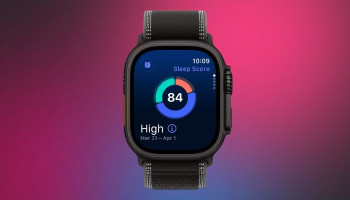
Nintendo has recently unveiled the Switch OLED, a fresh iteration of its beloved hybrid console. While the Switch OLED doesn't constitute a groundbreaking overhaul compared to its predecessor, it introduces noteworthy enhancements and features that may catch the eye of discerning gamers. But is the extra cost justified? And how does it stack up against the Switch Lite, the more affordable and compact variant? In this article, we'll delve into a comparison of Switch OLED vs. Switch to guide you in making the best selection.
Switch OLED vs. Switch: Design and features
Both the Switch OLED and the original Switch share a similar design, characterised by a tablet-like body that can be paired with Joy-Con controllers for handheld gaming or docked for console-style gameplay. Nevertheless, there are discernible distinctions between them.
Perhaps the most conspicuous difference is the screen size and quality. The Switch OLED boasts a 7-inch OLED display, whereas the original Switch sports a 6.2-inch LCD screen. The OLED screen offers a more immersive experience with reduced bezel size, alongside superior contrast, brightness, and colour saturation, enhancing game visuals.
Another noticeable divergence is in the kickstand department. The Switch OLED features a robust, wide kickstand that spans the entire back of the device, facilitating various angles for tabletop play. Conversely, the Switch comes with a smaller, less sturdy kickstand that covers only a portion of its back, often resulting in instability and breakage.
Internal storage represents another difference, with the Switch OLED packing 64 GB compared to the Switch's 32 GB. This means you can store more games and data without requiring an additional microSD card. However, both consoles support microSD cards up to 2 TB for expanding storage as needed.
The Switch OLED comes with a new dock that incorporates a LAN port for a wired internet connection, whereas the original Switch dock lacks this feature. This improvement can enhance your online gaming experience by reducing lag and disconnection issues. Additionally, the OLED dock offers a sleeker design and comes in both white and black colours, whereas the standard Switch dock is available only in black.
Audio quality sees an upgrade in the Switch OLED, featuring enhanced speakers that produce clearer and louder sound compared to the original Switch. This enhancement can elevate your gaming experience, particularly in handheld mode if you prefer not to use headphones.
Battery life remains largely consistent between the two, ranging from 4.5 to 9 hours depending on the game and settings. Some reports suggest that the OLED model may have a slightly longer battery life due to its more efficient screen technology.
Performance and games
In terms of performance and resolution, both the Switch OLED and the original Switch offer identical capabilities in both handheld and docked modes. Both consoles run games at 720p in handheld mode and up to 1080p when docked. They share the same processor, RAM, and GPU as the original Switch model, ensuring games run similarly on either device. However, games may appear more visually appealing on the OLED model due to its superior screen quality and contrast.
Both consoles support a vast library of existing and upcoming Switch games, as well as most Nintendo eShop titles. They also provide features such as online gaming, local wireless multiplayer, cloud saves, Nintendo Switch Online subscription service, parental controls, and more.
Price and availability
The Switch OLED retails for $349.99, while the original Switch comes in at $299. This means you'll need to shell out an additional $50 for the OLED model.
The Switch OLED was released on October 8, 2021, while the original Switch made its debut on March 3, 2017. However, both consoles continue to be in high demand and may prove challenging to find in stock at certain retailers.
Switch OLED pros
- Larger and higher-quality screen
- Improved kickstand
- Greater internal storage
- LAN port in the dock
- Enhanced audio
Switch OLED cons
- Higher price point
- No performance or resolution upgrade
- Lacks wireless charging
- Limited color options
Switch pros
- More budget-friendly
- A wider range of colour choices
- Additional USB ports in the dock
- Compatible with all accessories
Switch cons
- Smaller and lower-quality screen
- Less reliable kickstand
- Lower internal storage
- No LAN port in the dock
- Inferior audio quality
Switch OLED vs. Switch: Verdict
Both the Switch OLED and the original Switch offer exceptional gaming experiences, each catering to a specific set of preferences. However, it's worth noting that the OLED model doesn't represent a revolutionary leap over the original Switch, potentially making it a tough sell for some.
If you're already a Switch owner, upgrading to the OLED may be unnecessary unless you place significant importance on screen quality and other minor enhancements. If you're new to the Switch ecosystem, and your budget allows, the OLED could be the preferable choice for an enhanced handheld gaming experience. However, if you're on a tighter budget or primarily enjoy playing on a TV, the original Switch, offering similar performance and resolution, remains a solid option.
Ultimately, the choice between Switch OLED vs. Switch boils down to your personal preferences and requirements. Whichever path you choose, rest assured that both consoles offer hours of enjoyable gaming and entertainment.
















